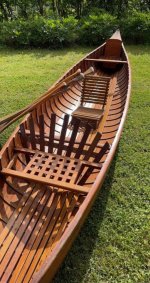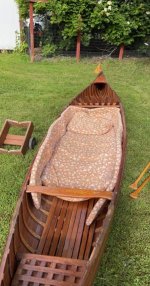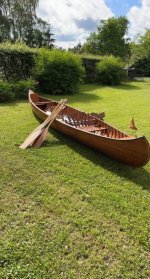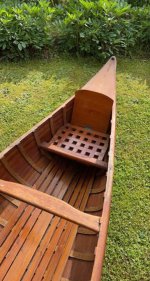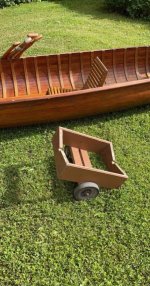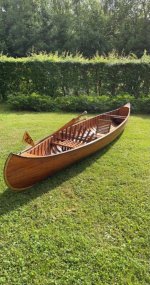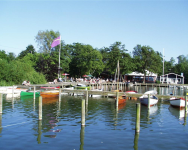I washed the boat today. It is definitely butt joints. There is an area near the bow were you can see light coming through a gap. I tired to get a picture but it wouldn't turn out.
There's also some sealing in the gaps that is crumbling a bit like old rubber. In another video from the video series I shared, he shows that after he caulks with the cotton, he uses some flexible putty to fill the joint flush and smooth. The can is labeled "seam compound". He says it's sandable and takes years to dry fully. I assume this also has something like this.
This is the bow, you can see some flaking of the varnish, and the light lines of the filler in the gaps, as well as the dark areas where it has been exposed to the elements.
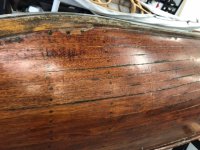
The stern has similar gaps and some loose varnish.
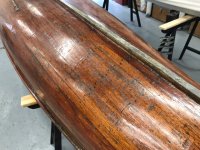
There are also two areas of some discolouration like this. It's not as dark as this image shows in real life.
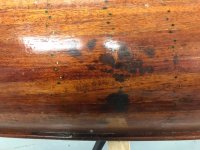
There is some raw wood and damage at the bow. (Ignore the spider eggs). The rectangular hole there is a brass insert for the tent. They are all along the gunwale.
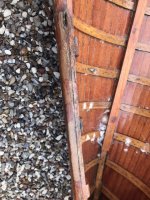
Some gaps to fill at the bow to tighten it up.
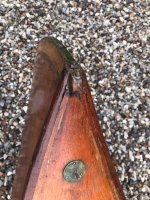
Some more raw wood at the stern. (I guess someone was learning how to steer)
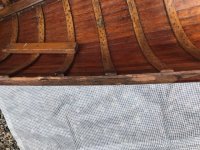
Clearly a nailed construction with no rivets. Interestingly the inner strip of wood running the keel line is pine. Not sure if this was a repair or done like this originally, but I'm not about to tear it out.
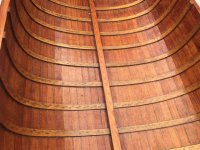
And here's the boat after we washed the inside, before we washed the outside. You can see the seams have swollen and the rubber like filler inside. It crumbles if you pick at it. It feels like a running track surface. Not sure if I should maybe try to pick some of this out and re fill it. I think I'd need to take it down to the wood for that though.
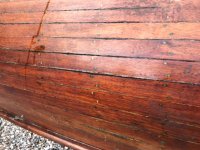
So, Step 1 is done. Next I guess it's hammering all those nails. Though I am a bit hesitant to do that. It's one thing to hammer a raised rivet in a vice and quite another to hit a flush nail on the underside of a 3ft wide mahogany boat. I'm worried I'm just going to end up denting the whole thing and making it look like garbage each time I blindly swing the hammer at the underside of the boat.
If anyone has a tip for how to hold a piece of iron on the inside of the boat while it's upside down though, I'm all ears. Maybe I just focus on the areas that have exposed seams though.
Also, is it worth removing the keel banding before boat soup and varnish or can that just stay on the whole time?
Sabs
